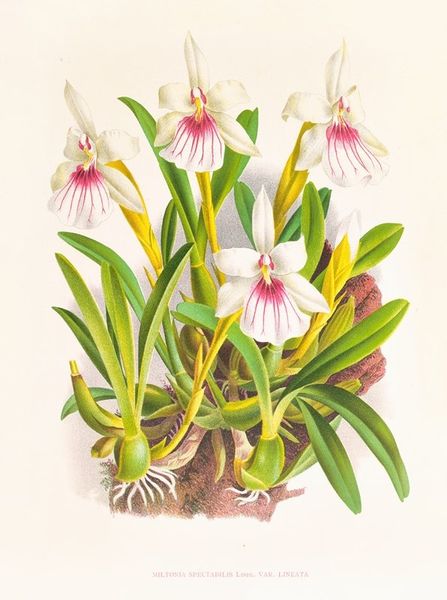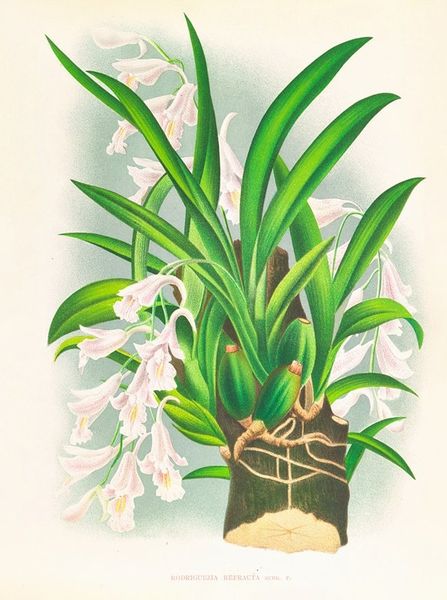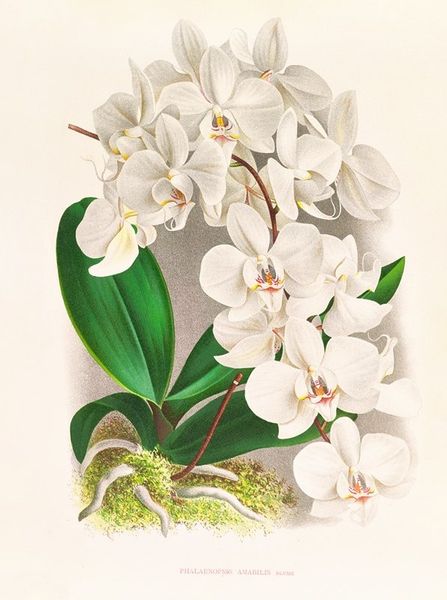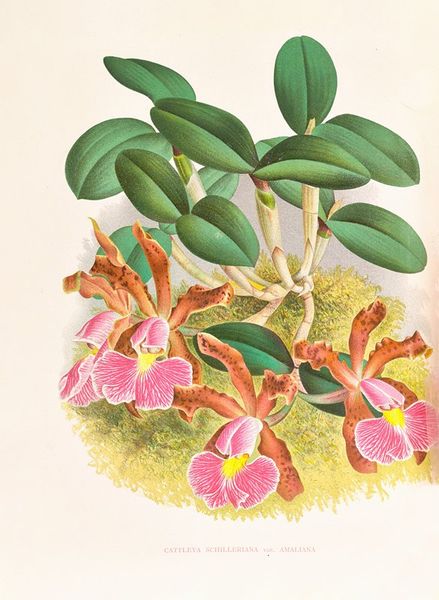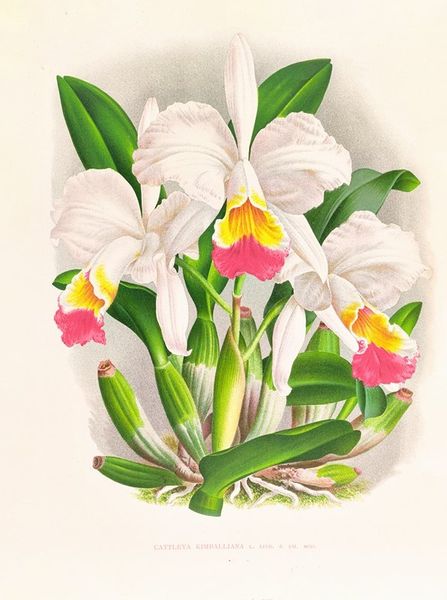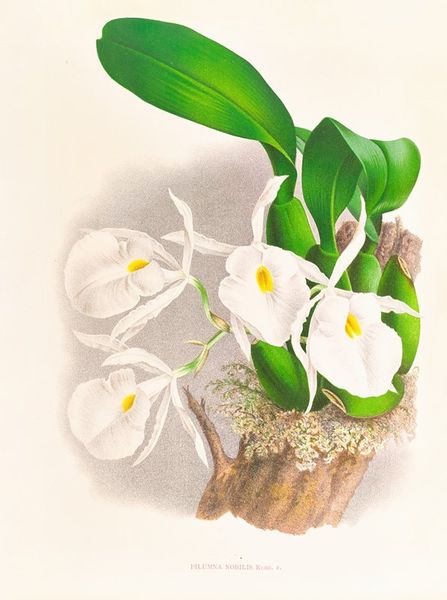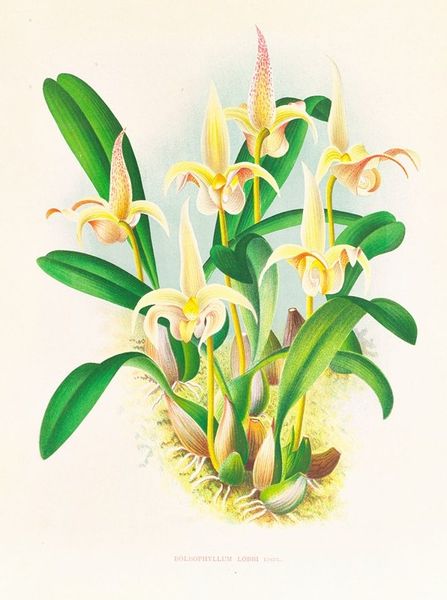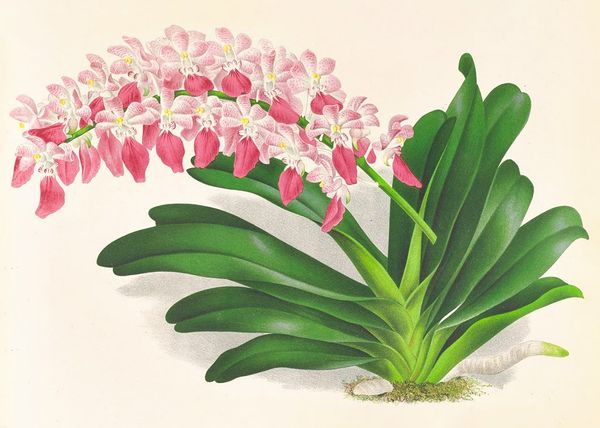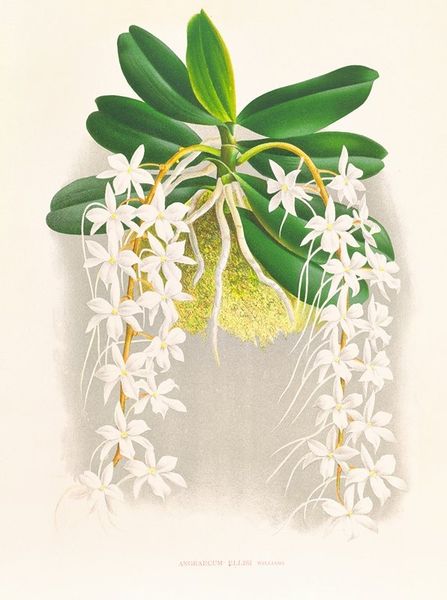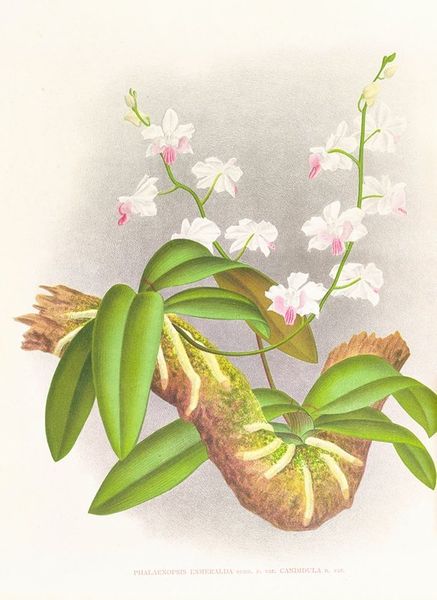
Copyright: Public Domain: Artvee
Editor: Here we have Jean Jules Linden’s "Trichocentrum albo purpureum", painted sometime between 1885 and 1906. The colors feel incredibly vibrant, even today. What I find especially intriguing is the orchid’s presentation in this sort of rustic wooden crate, it really enhances the colors. How do you interpret this work? Curator: It’s fascinating to consider how botanical art, particularly during this period, served not just as a record of natural forms, but as a reflection of colonial interests and scientific ambition. The very act of rendering this exotic orchid with such precision is tied to broader societal structures and the increasing visibility of the natural world as something to be understood, classified, and, in a way, possessed. Editor: So, it's less about pure artistry and more about scientific cataloging, framed by imperial motivations? Curator: Not exclusively, of course, but that is something worth noting, since romanticism and naturalism intertwine in interesting ways here. We might consider, what role did the artist play in shaping public perceptions of these newly ‘discovered’ species? Was it merely documentary, or was there also an element of idealization? It is key to ask such questions to understand the complete nature of art, especially within this genre. Editor: That's a good point! The artist has undoubtedly highlighted the beauty of the plant. What about the presentation of the orchid in what looks like a crafted crate, a conscious aesthetic decision that reflects, perhaps, domestication? Curator: Exactly! The wooden container domesticates a natural thing for consumption, reflecting society's desire to control and showcase natural wonder. The piece prompts conversations around exoticism, scientific exploration, and the aesthetic frameworks within which we engage with the natural world. Editor: I never considered that, I always assumed flower paintings were simple. I see how a flower can be perceived in different lights. Curator: Exactly, that's what is so important! Never stop asking, exploring the political framing to develop more profound and complete readings.
Comments
No comments
Be the first to comment and join the conversation on the ultimate creative platform.
